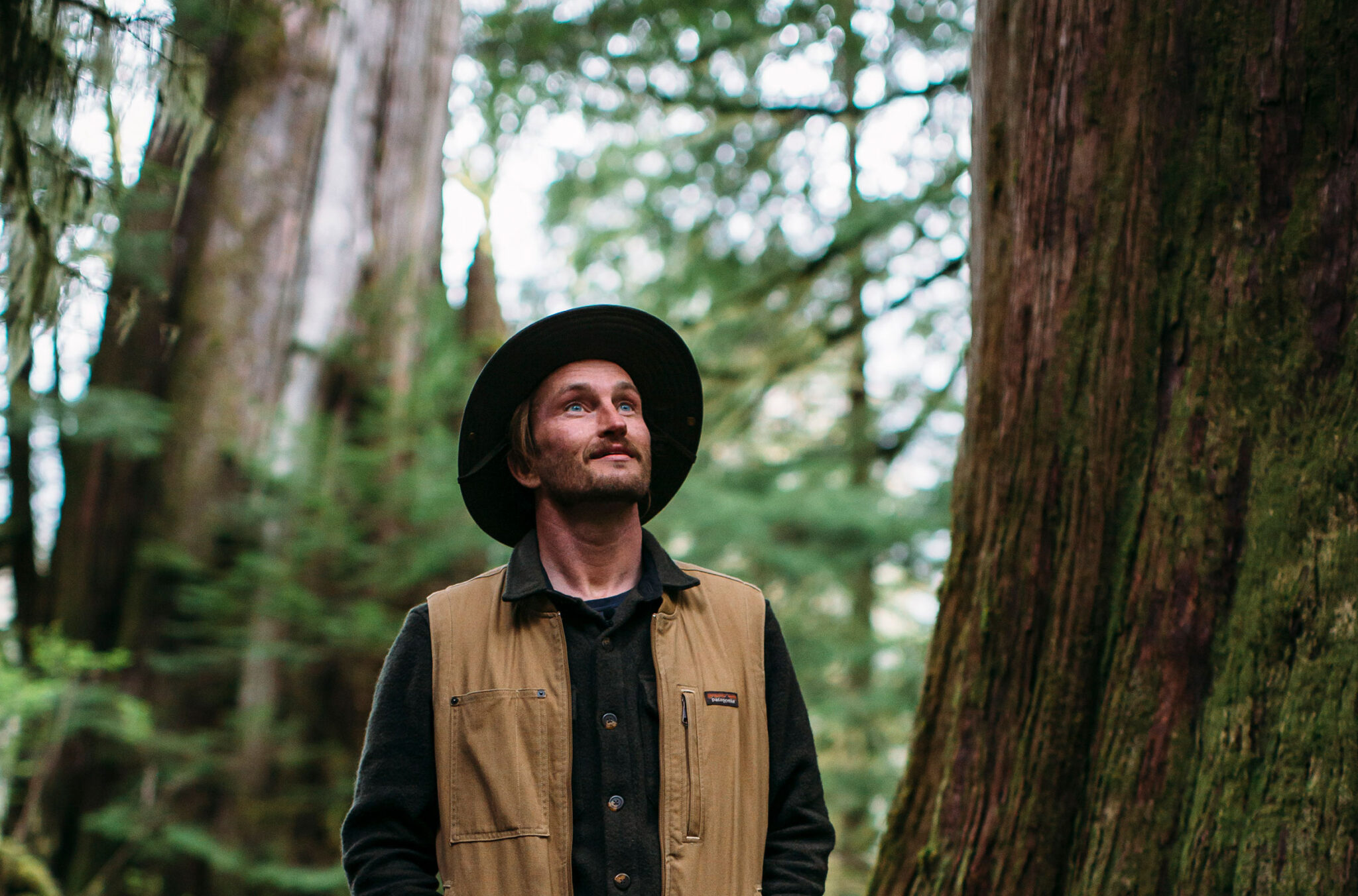I love a good nature walk and Whistler sure has some great areas to explore with some incredible trees. Based on the west coast of British Columbia, Whistler lies in what’s typically referred to as a Coastal Western Hemlock Zone.
This means that the forests here are typically dominated by trees like Douglas fir and western redcedar, and if all things were left undisturbed, these forests would eventually mature into a climax forest dominated by western hemlocks. Fortunately, change is constant in nature, whether that be landslides, windthrow (uprooting of trees by the wind), or even wildfires, so these forests maintain their diversity.
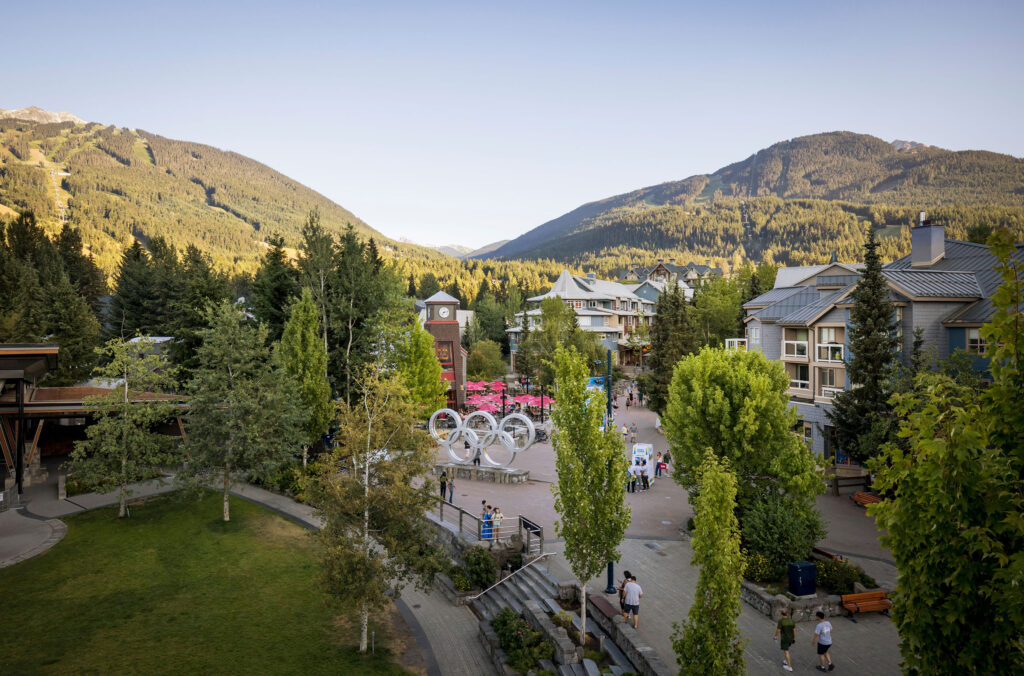
Disturbance events like these are important to forest ecosystems all over the world, and the specific type, frequency, and nature of the disturbance can affect the successional species that follow. One of the biggest disturbances to native ecosystems today, you can probably guess, are humans. We create roads, build things and live amongst these ecosystems.
As fellow animals living in this world together, we are constantly engaged in how these ecosystems grow, function and evolve. So, today I’ve got a little walk lined up for you to highlight some of my favourite Whistler trees and examples of this ongoing balance.
Western Larch by the Waterfall
This small park area just off Northlands Boulevard is a great place to kick off, as it’s a haven for relaxation. Along this fabricated little pond, with its cool waterfall and basalt features from the surrounding hillsides, live all sorts of native and non-native plants that have been brought in to create this lovely setting.
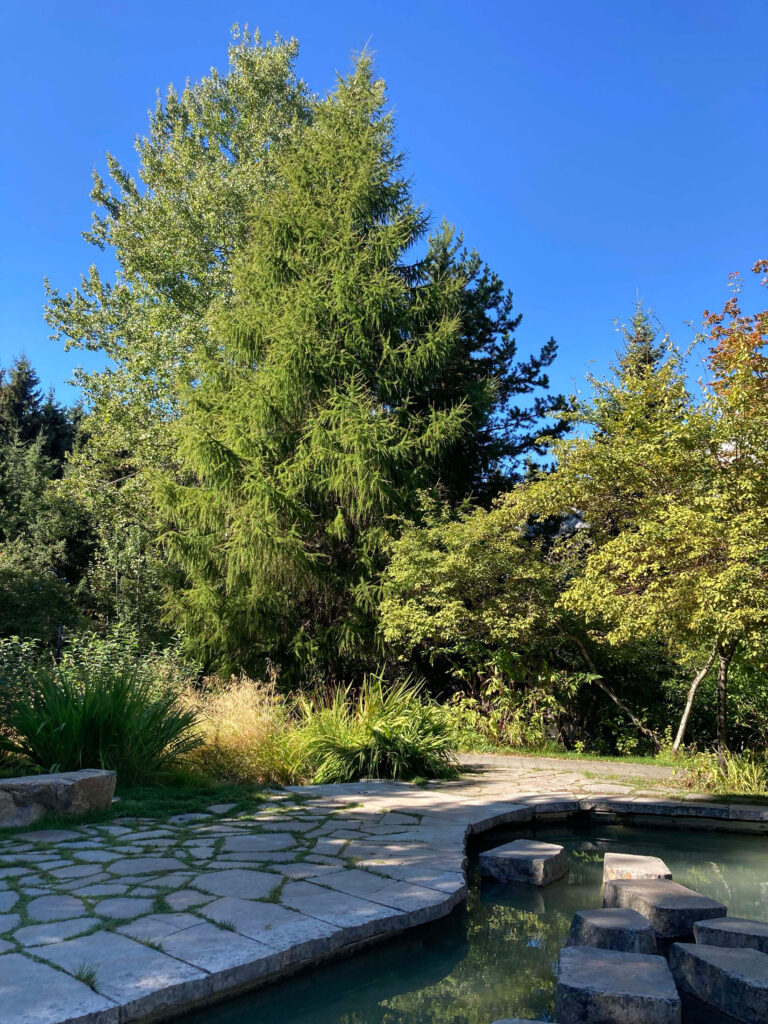
Native, vine maple trees line the edges, but one of my favourite trees here is one that’s local to BC, just not in this region – the western larch. Larches are gorgeous, coniferous trees that grow to be nearly 60 metres tall and are typically found on the eastern side of the mountains here. They generally prefer colder, drier climates and don’t naturally exist in the Coast Mountains. This tree, as well as several others in the area, have been brought in by humans for ornamental reasons and they thrive in these familiar mountain environments.
The coolest thing about larches, to me anyway, is the fact that they are a deciduous conifer, meaning that their leaves turn really cool hues of yellow in the fall before falling to the ground. They also have medium-sized, upright cones that are really gorgeous shades of purple when they are first developing. We don’t see trees like this too often on the west side, so having this beauty grace us with its presence is a treat.
Stumps & New Forest in Florence Peterson Park
Just across the street from the waterfall, we have Florence Peterson Park, a lovely little trail that weaves around calming pools and through big, old-growth forest stumps. This park serves as a great example of Whistler’s logging history, right in town.

As you walk through the park, you’ll notice stumps of big western redcedars that were cut down close to a century ago. Redcedar wood is incredibly rot-resistant and takes a really really long time to decay. This means you’ll find redcedar stumps like the ones in this park in remarkably good condition, whereas the stumps of trees like a Douglas fir would be pretty rotten and decayed at this point.
Little, rectangular notches riddle these cedar stumps. They are known as springboard notches, where loggers, back in the day, would set a plank that they could stand on. This allowed them to get higher on the trunk of the tree to cut it down where the wood was more straight-grained and consistent, rather than at ground level where their often wide, fluted bases made it more tricky and time-consuming to cut in to. This just shows how instrumental these forests were, and still are, to the town.
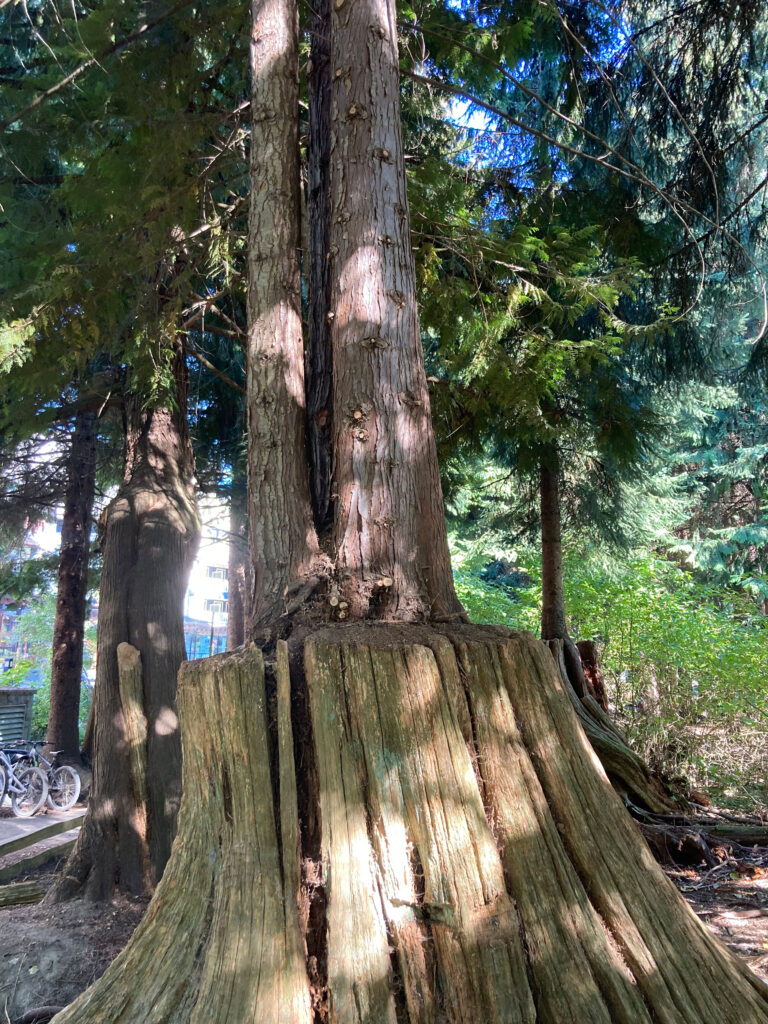
My favourite thing about these Whistler trees (or stumps, really) is that even though the forest here is gone, these stumps are helping the next generation of forest thrive. As you walk through, you’ll see baby trees of western hemlock or redcedar sprouting up from these stumps, using them to get above the competition on the forest floor so they can get closer to the sunlight. So, even though things have changed here over time, forests like this are still a growing, active part of the community. Pretty dang neat!
Big Cedar & Stump at the Bike Park
Alongside the Valley Trail, behind Day Lot 3, there’s a big relic of the forest that existed here way before all the rad skiing and biking – a magnificent, ancient western redcedar. This gorgeous tree is easily twice as old as the town of Whistler itself, standing tall above the surrounding second-growth trees. It’s so big around its base that it would take a couple of people linking arms to give this tree a proper hug.
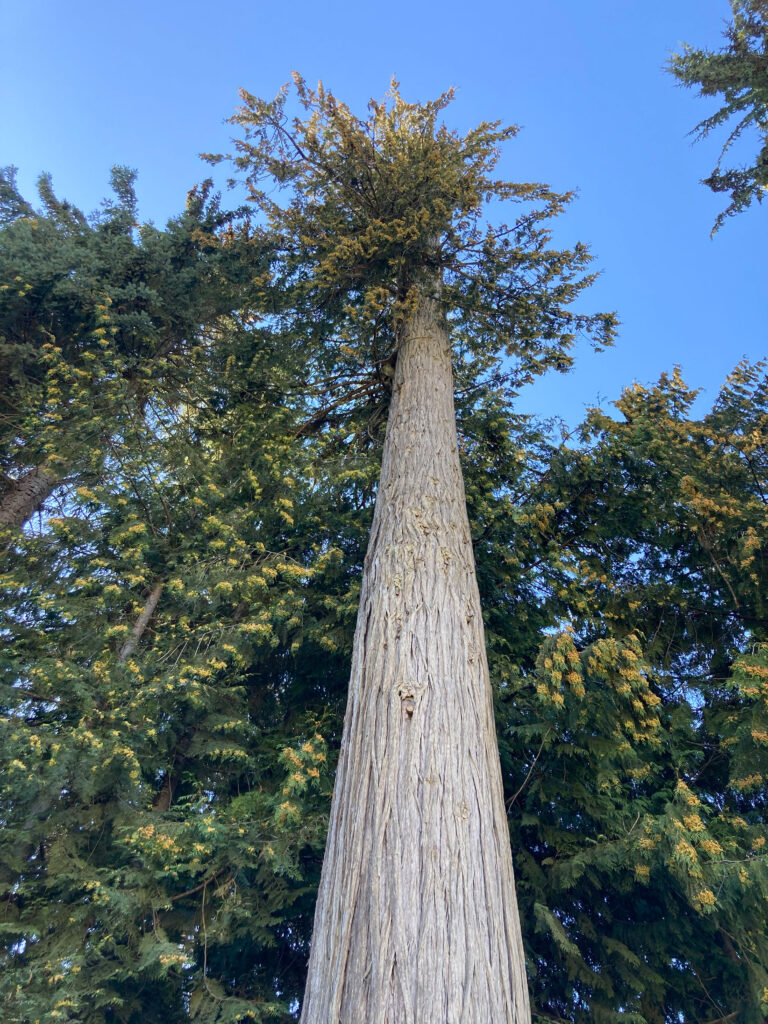
Redcedars like this, and bigger, used to be common all throughout the valley bottom here, requiring lots of water and space to grow as big as this one. They were one of the initial drivers of western settlements in the area, as folks came from all over for timber-based jobs that helped build the economy of the province. If you’re looking at this tree from the trail and you glance to your right, you can see there’s a stump of a slightly smaller western redcedar that was cut down decades ago. From that, a sapling western hemlock has grown. Just another great example of the never-ending state of change these ecosystems are in.
Big Cottonwoods along Fitzsimmons Creek
This little gravel path along Fitzsimmons Creek is a great place to explore a more mountainous, riparian forest here in Whistler. You’ll notice that much of the forest is dominated by deciduous trees like big leaf maple, red alder and black cottonwood rather than the conifers of hemlock, cedar and spruce that blanket the surrounding hillsides.
This is primarily because deciduous trees tend to not do as well growing in the shade of other trees. They thrive in areas where there’s a lot of open sunlight, which gives them the opportunity to soak up a bunch of energy in the summertime with their big, broad leaves, and the creek makes a great opening in the forest cover to do just that.
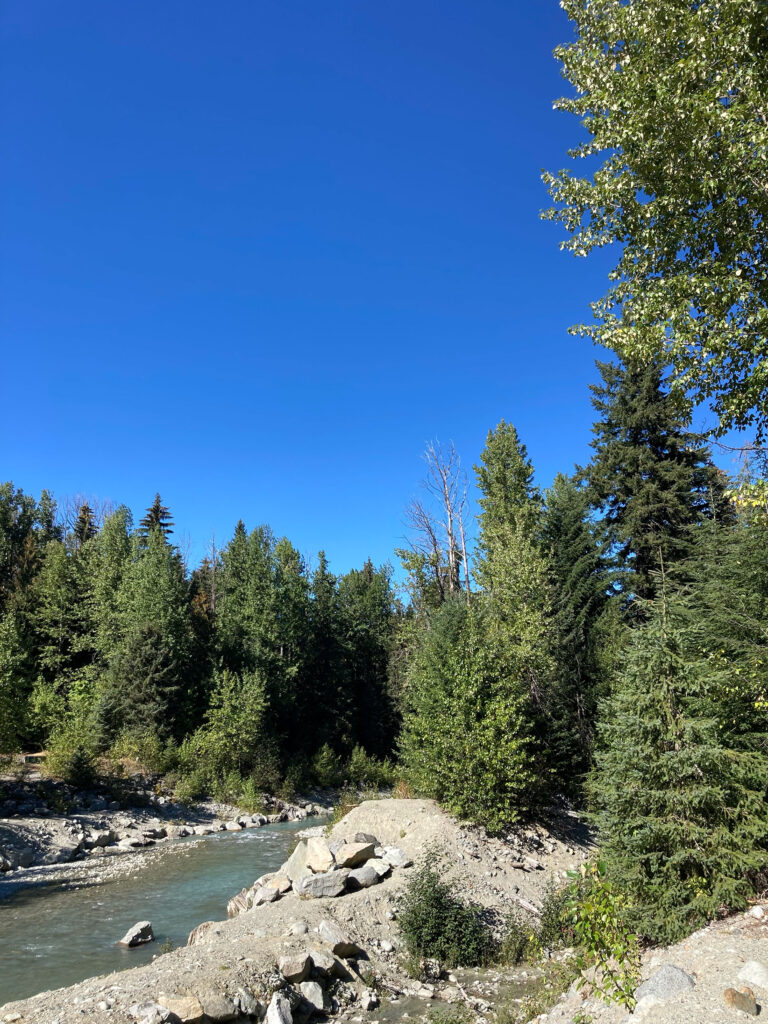
This little stretch is home to some of the biggest deciduous Whistler trees in town, like the massive black cottonwoods that line the banks of the river. Black cottonwoods do really well in areas where they have access to plenty of sunlight and water, sucking up between 200 and 500 litres a day, which they use to conduct photosynthesis in their leaves and grow as massive as they do.
Trees like this can get to be over three metres thick and live up to 200 years. However, because they have the highest water content out of any other tree around here and grow so big over a relatively short span of time, they tend to have weaker wood. This makes them more susceptible to things like early frosts, which freeze the water inside them causing them to rupture. They can also develop big woody burls, which can compromise their strength and lead to breakage, and their branches frequently get weighed down in deep freezes and snap off, littering the forest floor.
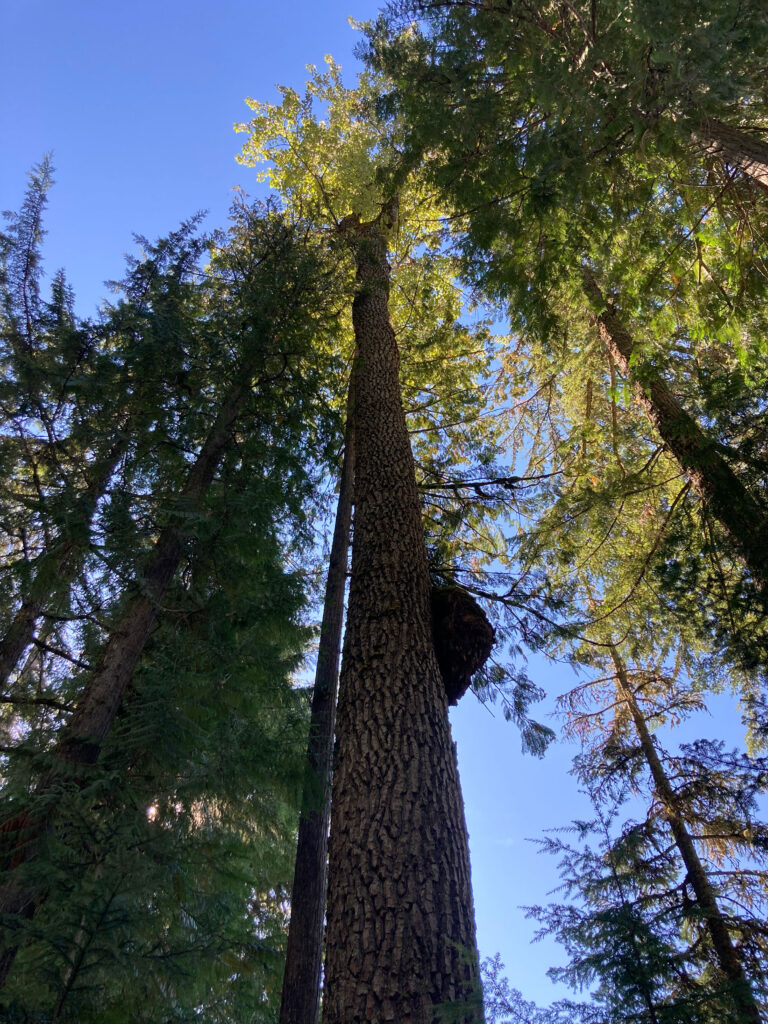
However, its deep, spreading roots do double duty. They make the cottonwoods relatively flood-resistant as well as hold the river banks together, keeping them from eroding so that other trees here can grow and thrive. They’re all part of a healthy, riparian forest ecosystem, what beauties!
Alder Grove in Lost Lake Wetlands
There are few things in this world more gorgeous than a grove of red alders, no matter what time of year. In the summer, the bright contrast between their greyish-white, lichen-coated bark and the poppy green hues of their leaves is always breathtaking. This is followed by a short-lived period in the autumn where their leaves fade to yellow and then drop. Even in the winter, their bare, white stems covered in snow create a calming setting of a thousand shades of grey.
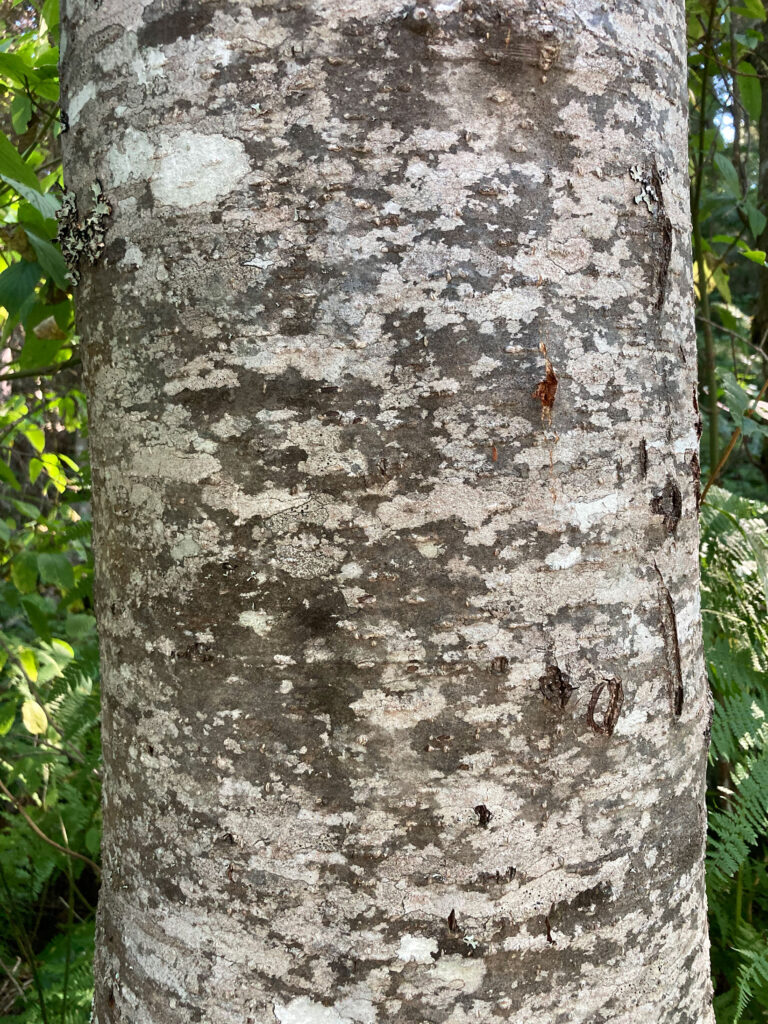
This grove of Whistler trees is along a small tributary creek flowing from Lost Lake into Fitzsimmons Creek. Waterways like this are classic examples of areas of frequent disturbance, as the water is constantly creating change by eroding or flooding the banks. Alders are a really important pioneer species in areas of disturbance like this because not only do they thrive in poor soil conditions, but they are able to work symbiotically with bacteria in the soil to get nitrogen, which they use to create chlorophyll to photosynthesize.
Nitrogen is the main, limiting nutrient in many trees’ growth, as they all require it to create chlorophyll, but only alders are able to obtain it so easily. When alders drop their leaves early in the fall, they do so when they are mostly still green, meaning that they’re loaded with nitrogen-rich chlorophyll which breaks down to form a rich, humus layer and soil that allows for other tree and plant species to take root here and thrive.
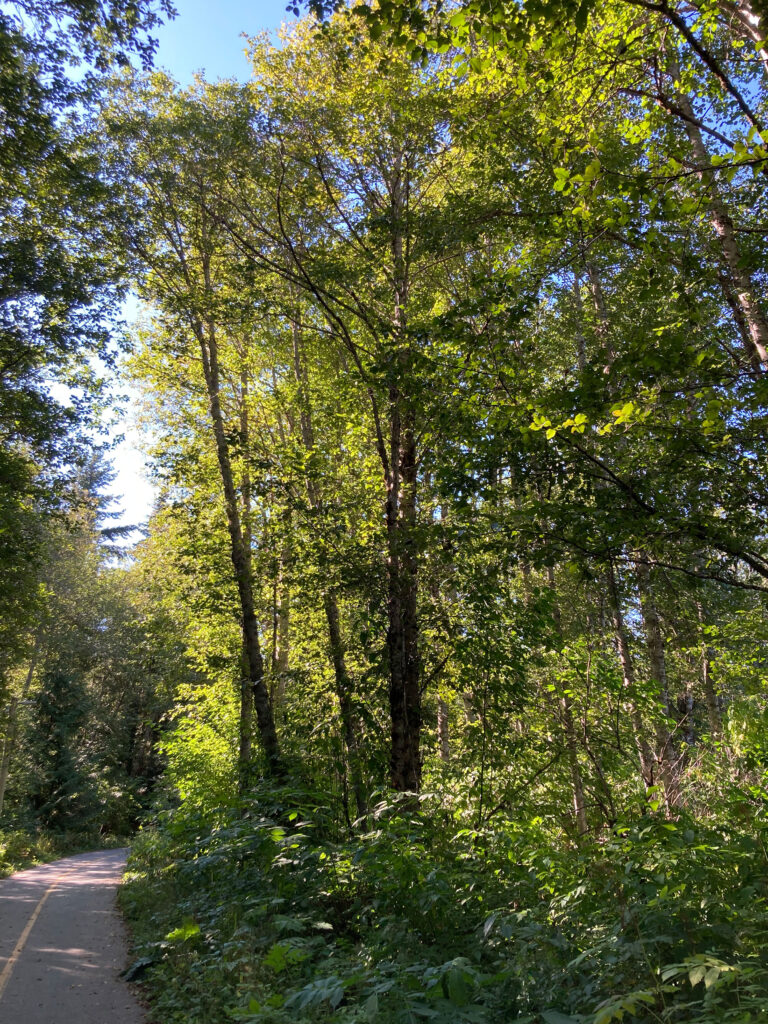
Eventually, conifer trees like redcedars and spruce from the surrounding forest will be able to establish and grow under the shadow of these alders thanks to the nitrogen-rich soil they’ve created. They’re helping this forest stand gradually mature into a healthy, climax forest with all sorts of biodiversity. So, not only is this little stand here absolutely gorgeous, but it illustrates the constant state of change that the ecosystems we live amongst are in.
As you continue your adventure in Whistler, I’d encourage you to look up and look around. Take note of the different trees and forest types that surround you, for they are much more than just some pretty, green things to look at. These forests, just like our human society, are in a constant state of change as different disturbances and events take place, growing and evolving as a collective in order to adapt to a changing world.
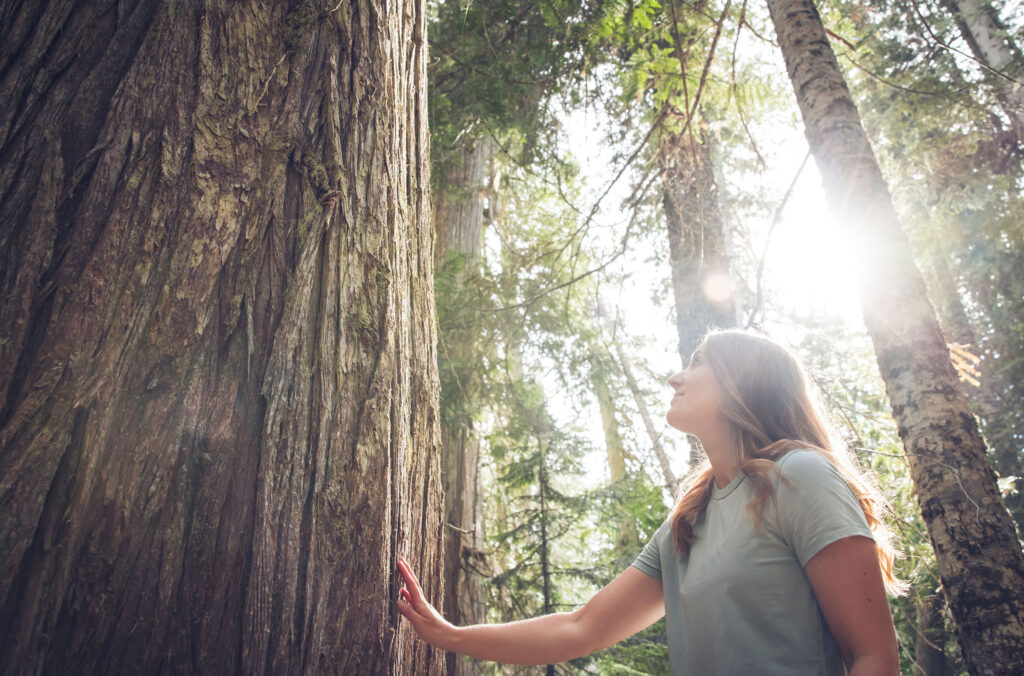
Everything has a role to play within these forests, serving a different function at a different time that ultimately helps the entire ecosystem grow and thrive as a rich, biodiverse community. Just as every individual does in our human society.
We’re all here just adapting through change and trying to grow together, so let’s all smile a bit more, be kind, and work together to create a society that works for us all. Enjoy your time in Whistler, and I hope to catch ya out in the woods some time!
Remember that you can join Ross on a self-guided tour of these Whistler trees via the free, Go Whistler Tour app. And if you enjoyed this post take a read of Hike Whistler’s Ancient Cedars Trail, Five Active Relaxation Ideas and Forest Bathing in Whistler.
[/vc_column_text][/vc_column][/vc_row]
Book your next winter trip to Whistler now to secure the biggest savings of the season, with up to 65% off lift tickets and 45% off rentals. Stay longer, save more; book seven nights or more and receive a free $100 CAD Dining Voucher.
Epic Coverage is included for free with the purchase of a day or season pass, so you can plan ahead with peace of mind.
Come experience Whistler Blackcomb’s extensive terrain and adventure at every turn to see why we're known as one of the best resorts on the planet. Secure your mountain getaway with Whistler.com for personalized service and the local knowledge of our Whistler-based team.
